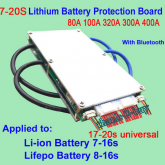I have been perturbed by the same issue for a while now, and agree with pretty much everything you have articulated here, and have been pondering what would improve the situation. I had been considering putting together some sort of index of the 5 or so most common BMS with a quick reference of features, current limits, etc, but never got past the half-baked idea phase (and I'm in the same boat as you, spend some time researching BMS' but no real experience).
Really there are two issues that need addressing.
- People need help understanding what a BMS is and does
- People need help choosing the best BMS for them
- Actually, a third thing a lot of people are just seeking is confidence/reassurance/confirmation about a BMS they think might work for them
People really need help with the first question, but usually ask the second question. It seems almost everyday there is a new thread "what is the best BMS?" or "I bought 280Ah cells what BMS do I need?"
Its hard to answer the second question in a concise way regardless of the asker's knowledge, but its especially hard if they don't have a handle on what a BMS is conceptually. And I don't fault newbies for not understanding its a rather esoteric subject, with very few beginner friendly learning resources. Even most of us who have devoted some time to learning have pretty shaky understandings in my opinion.
I think two things would be very useful
- A thread, wiki entry, or @Will Prowse video (or all of the above) that is an introduction to BMS', what they are, what features matter, how to size them.
- A thread, wiki entry or @Will Prowse video comparing some of the most common BMS key features.
Honestly, I think this is perfect material for Will, there are a lot of people thirsty for this info, and he is quite good at explaining things in simple terms.
But, that's not quite the point of showing that website. It is a slick way to narrow down the list of BMS' that fit your need.






